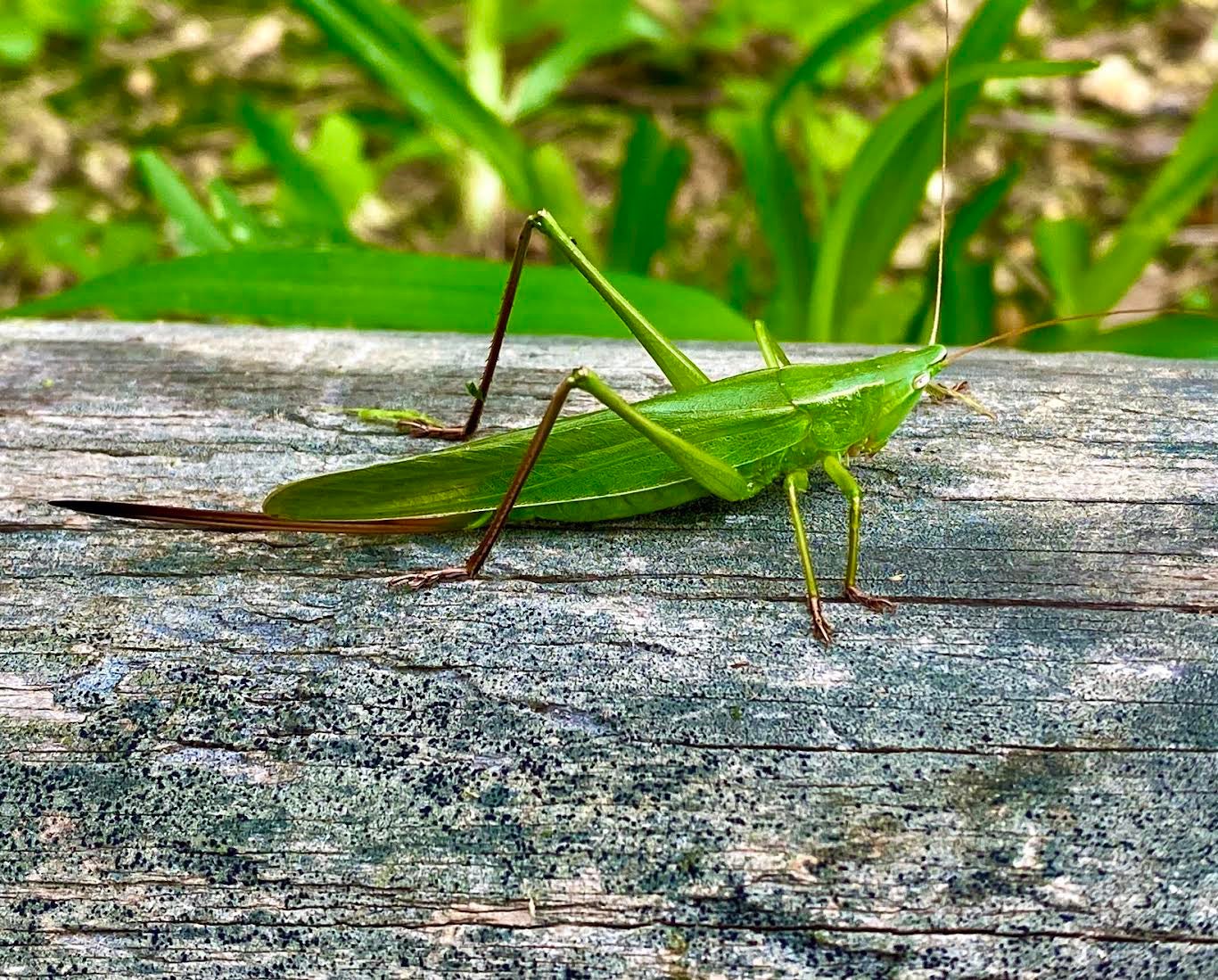It is katydid season, even if you don’t see them
Published 1:46 pm Monday, October 2, 2023

- Katydids are hard to spot, but their song is easy on the ears. Photo by Steve Roark
|
Getting your Trinity Audio player ready...
|
By Steve Roark
Cumberland Gap National Historical Park
It’s hard to spot Katydids because they are so well camouflaged. But anyone who sits on their porch on a late summer’s night has enjoyed hearing their “katy did….katy didn’t” song, along with their chirping cousin, the cricket.
True katydids are green with long thread-like antennae. They live in trees, bushes, and tall grass, and their color and body shape resemble a leaf for protection from predators. Their hind legs are long and powerful, making them strong jumpers. In fact, Katydids usually don’t fly, but only flutter their wings to extend jumps. They are primarily plant eaters, although a few species feed on insects.
Katydids are great singers, or more correctly, instrumentalists. The chirping noise they make is produced (only at night) as the insect rubs its left forewing against a ridge on the right forewing. Katydids don’t actually sing, they sort of play a fiddle. And it’s the male that does the fiddling, hoping to woo a female with his playing. She hears the chirping through ear structures called tympana, which oddly enough are located on their front legs.
Here in the mountains, there’s some weather lore saying that the first frost of autumn will occur 90 days after the first Katydid is heard. Based on that and my observation skills, first frost will be Oct. 16j, so mark your calendar.
Because katydids are cold blooded, their chirping and other activities are closely related to temperature change. Listening to the length of the katydid’s song allows you to calculate the following temperatures: kay-tee-did-it (78 degrees); kay-tee-didn’t (74 degrees); kay-tee-did (70 degrees); kay-didn’t (66 degrees); kay-tee (62 degrees); kay (58 degrees).
One other tidbit about katydids: they, along with their grasshopper and cricket cousins, have in the past been eaten as a protein source. I understand you should pull off the legs prior to cooking and eating so they won’t stick in your throat. Just sayin’.
Steve Roark is a volunteer at Cumberland Gap National Historical Park.



